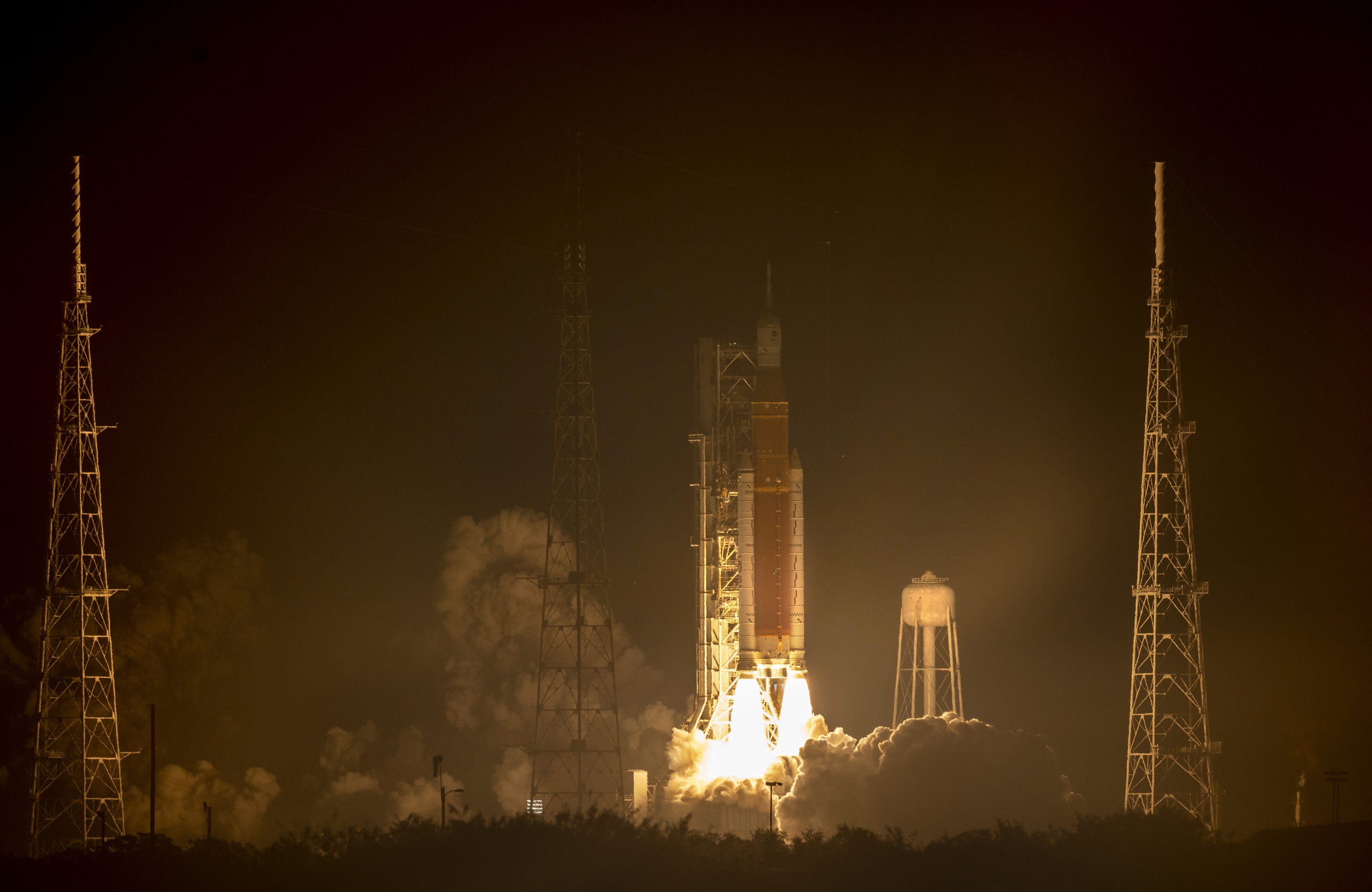Editor’s Observe: This story was up to date Nov. 16, 2022 to replicate the launch and up to date mission timeline.
A vital take a look at flight that can present a primary have a look at NASA’s new era of space travel begins with what ought to be a spectacular rocket launch from the Florida coast.
From there, vital moments and in-flight maneuvers will decide the success of the un-crewed Artemis 1 Mission, the primary actual step towards the primary crewed moon touchdown since Apollo 17 in 1972.
Here is a timeline of key occasions that can observe the Artemis 1 launch on a journey to orbit the moon and the Orion spacecraft’s return to Earth.
The enormous 30-story tall Artemis I rocket will produce a most 8.8. million kilos of thrust when it launches from Kennedy House Heart in Florida. That is extra energy exertion than any rocket ever, NASA says.
A exactly timed chain of occasions follows within the subsequent roughly eight-minute window. The dual strong rocket boosters will separate, adopted by the jettison of the service module fairing and launch abort system. The 212-foot tall core stage predominant engine will reduce off earlier than it too separates from the spacecraft.
Earth’s gravity will likely be pulling on the rocket your complete time, requiring the launch system’s engine to burn 735,000 gallons of liquid propellant to create 2 million kilos of thrust throughout its escape to the sting of area. As soon as their jobs are finished, the strong rocket boosters and core stage will merely fall again to Earth.
Photo voltaic panels will deploy to generate energy for Orion.
The @NASAArtemis mission is launching to the Moon, starting a brand new period of lunar exploration! Artemis will use @NASASCaN’s Close to House Community and Deep House Community to speak with mission management on Earth.
Find out about Artemis' community help right here: https://t.co/yFgOWteUQu pic.twitter.com/ZqbuqBtaVX
Orion is about 100 miles above Earth and nonetheless accelerating at greater than 17,500 mph, however will nonetheless want extra energy to succeed in the moon. As soon as in low-Earth orbit, its subsequent key step is the trans-lunar injection (TLI) — a maneuver that can propel it 280,000 miles past Earth and 40,000 miles past the moon. That is farther than any spacecraft able to crewed flights has ever gone. The maneuver begins with a blast of 24,750 kilos of thrust from the higher a part of the rocket that can permit Orion to be captured inside the moon’s gravity.
That rocket stage will separate and deploy 10 small CubeSat satellites to assist research the moon or journey deeper into area earlier than they’re consumed throughout an orbit across the solar.
The spacecraft will likely be touring towards the moon for the following few days.
Orion has made it, carrying its cargo to lunar orbit. On Flight Day 11, Orion is ready to make historical past. It is because of exceed the report distance set by Apollo 13 of 248,655 miles past Earth by about 30,000 extra miles.
Orion begins its return journey to Earth. Orion is now scheduled for a tentative splashdown on Dec. 11. The spacecraft will likely be hurtling towards Earth at 24,000 mph earlier than gently splashing down within the Pacific Ocean close to California.
You may observe the 26-day mission with NASA’s Artemis Twitter account. NASA additionally will present protection on its YouTube channel. NASA is providing a number of different methods to track the mission in real-time.
No, except you are counting the three ‘moonikins’ NASA assigned to the mission — and they’re noteworthy. The mannequins will likely be within the same astronaut suit that will likely be worn by future Artemis crews and have sensors that measure vibration and area radiation. One of many ‘moonikins’ is known as Moonikin Campos after Arturo Campos, who was a key determine in bringing Apollo 13 safely again to Earth. You may observe their adventures here in comedian book-style.
The Artemis 1 mission is the primary flight take a look at of the House Launch System rocket and Orion, the stack of expertise that can finally ship astronauts to the moon. Artemis II will ship Orion and a crew farther than individuals have ever traveled from Earth. Artemis III is concentrating on the primary crewed moon touchdown since Apollo 17 in 1972. The timeline for these missions relies upon largely on how issues go along with Artemis 1. The missions, named after the goddess of the moon and twin sister of Apollo in Greek mythology, are thought of stepping stones to an eventual crewed mission to Mars.




